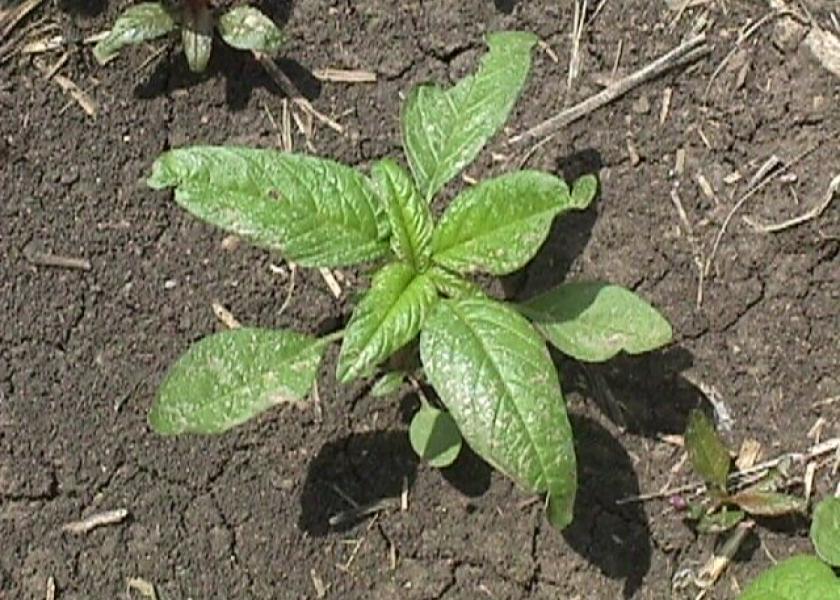First Dicamba-Resistant Waterhemp Confirmed in Illinois Farmer's Field

A team of University of Illinois weed scientists confirm they have identified the first dicamba-resistant population of waterhemp.
The dicamba-resistant waterhemp was found in a Champaign County, Ill., farmer’s field. This same population of waterhemp is resistant to six herbicide groups, says Pat Tranel, professor in the Department of Crop Sciences at the university and co-author of the study just released.
“We were reluctant to use the ‘R’ word with regard to dicamba, because Dr. (Aaron) Hager had originally been called into this field because of poor control with HPPD inhibitors, group 27 herbicides,” Tranel says.
But as early as 2014, researchers found dicamba provided only 80% efficacy on waterhemp in the field. Control declined to 65% just a few years later.
Tranel says what makes the confirmation of dicamba resistance even more disturbing to researchers is that dicamba was never sprayed on this particular population of waterhemp.
It’s why researchers believe that the waterhemp has a type of metabolic resistance. This population of waterhemp is “activating detoxification genes before the herbicides can do harm,” Tranel says in a university press release.
That is very different from the more widely known and understood problem of target-site cross resistance, the type of weed resistance farmers most commonly encounter.
With target-site cross resistance, a weed species deflects control efforts by one specific active ingredient and then, over time, is then resistant to herbicides in the same family of products—those with the same site of action or mode of action. (Mode of action is how an herbicide controls a weed. Site of action is where the herbicide controls the weed.)
"As we get these more complex populations that have experienced selection from multiple chemistries, they are becoming resistant to broader and broader suites of herbicides, whether they've seen those herbicides in the past or not. That's a scary thought," Tranel says, in the release. “It could mean new chemistries could be rendered ineffective before they even reach the shelves.”
That potential drives home the need, Tranel says, for farmers to be more diligent in developing their weed-control strategies for 2022 and beyond.
“We're saying use multiple, effective herbicides with different sites of action and overlap your residuals,” he says.
Specifically, when farmers make a post herbicide application,Tranel says to add a soil residual product at the same time to get any weeds that might germinate two to four weeks after the post application. That will provide longer lasting weed control and reduce the number of weeds that can escape and go to seed and contribute to herbicide resistance problems.
In addition, Tranel says to do multi-year, weed-control planning for your herbicide program and have a plan B and plan C in your hip pocket.
"Look, we're going to continue to use herbicides on the vast majority of acres in this state. We're not going to stop," Hager says, in the university release. "But it behooves people to really have some deep conversations with whoever's giving you recommendations, whether it's your input supplier, your agronomist, or whoever. It's time to go back to what we used to do and try to map out three or four year weed-control programs and not just do this on a yearly basis."
And, Hager adds, "We're going to have to do something in addition to herbicides to try to get to the end of the growing season without any seed production. Anything short of that and evolution continues."
The article, "Characterization and inheritance of dicamba resistance in a multiple-resistant waterhemp (Amaranthus tuberculatus) population from Illinois," is published in Weed Science [DOI: 10.1017/wsc.2021.76]. Authors include Lucas Bobadilla, Darci Giacominni, Aaron Hager, and Pat Tranel. The work was funded by Bayer Crop Science.
The Double Whammy Of Weeds And Stressful Weather
Combining Ingredients To Tackle Tough Weeds
Tackle Tough Weeds in Pastures Like you Would in Corn and Soybeans







